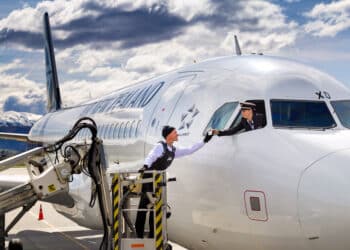The Reserve Bank of Australia (RBA) has released a Consultation Paper as part of its Review of Merchant Charge Payment Costs and Surcharging, after a previous review found the system to be outdated, as surcharging no longer achieves its intended goal of steering consumers to make better payment choices.
Card payments current account for approximately 76 per cent of all transactions in Australia according to the RBA, and that figure only continues to climb.
Under the existing proposal, EFTPOS, Visa, and Mastercard networks would be allowed to ban surcharges, which is something the RBA currently prohibits.
The RBA says should the proposal in its current form be enacted, it would save consumers $1.2 billion per year. However, the CEO of the Australian Restaurant & Café Association (ARCA) Wes Lambert says, should the proposal go through, it will raise costs rather than cut them.
“We’re a bit confused, because the RBA is proposing this change is going to save consumers $1.2 billion and that they’re going to be cutting the costs of hospitality businesses. For us, both of those things are as far from the truth as humanly possible,” says Wes.
“It might be saving consumers $1.2 billion in surcharges, but even the RBA has said these charges should be embedded into the price of the item – if they are not already.
“The price of the item is going to go up to cover the cost. Since we don’t have six or eight cent coins, people are now going to be paying at least $5.10 for a cup of coffee that previously cost them $5.08 with the surcharge.”
The lowering of the cap on interchange fees and requiring card networks to publish the fees they charge has also been included in the proposal, but Wes says even those venues that have never paid merchant fees will likely be adversely affected.
“The RBA is saying they’re going to save merchants money by capping the interchange and other costs related to merchant fees, but the problem in that statement is for the 81 per cent of the hospitality industry who always charged a surcharge, but didn’t pay merchant fees in the first place,” he says.
“They got charged a per cent from their bank, and they passed that per cent onto the customer. Their profit and loss (PnL) had net zero merchant fees. Unless the RBA is proposing 0 per cent merchant fees for merchants around Australia, they’re going to see their PnL line merchant fees go from net zero, to between $40,000 and $100,000.”
The addition of such a cost will make a deep cut into what are already razor thin profit margins in hospitality.
“That is not a saving, it’s an increased expense,” continues Wes. “According to IBISWorld, hospitality businesses make between a 3.3 and 3.8 per cent profit.
“Let’s say a café turns over $1 million a year, the profit on that is only about $33,000. Now, the RBA is taking 25 per cent of that profit away because you have to pay these merchant fees that used to be allowed to be passed onto the customer.”
One conceivable fix to the problem of cutting out merchant fees could be for cafés to raise prices on items to cover the difference. Wes says this must not be the case.
“Cafés are going to have to raise their prices just to make the exact same profit as they made before. What happens when you raise prices to consumers? Demand goes down. Many cafés and restaurants will not simply be able to end up absorbing the cost, and it will send many of them into insolvency. It will be make or break,” he says.
“If you walked into a restaurant 20 years ago, there was an ATM in the corner that would have a $2.50 fee to withdraw cash, and nobody complained about that. Now, the ATM has shrunk and it’s sitting on the counter, but no one is treating it like an ATM.
“That’s all it is, though. It’s a promise to pay from the customer to the restaurant through a service provider or a bank.”




